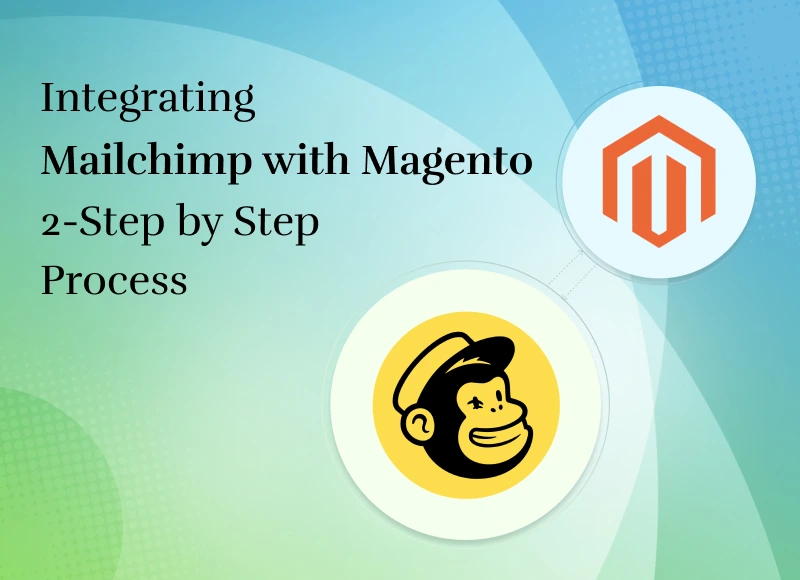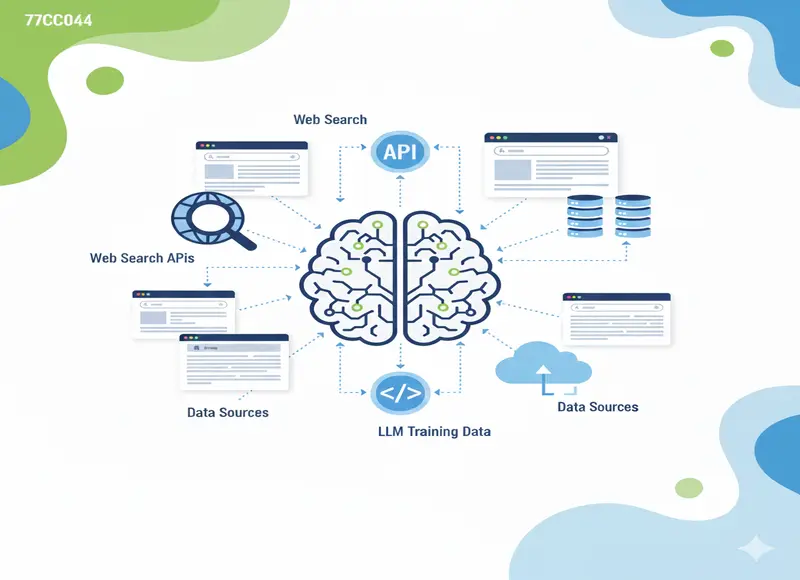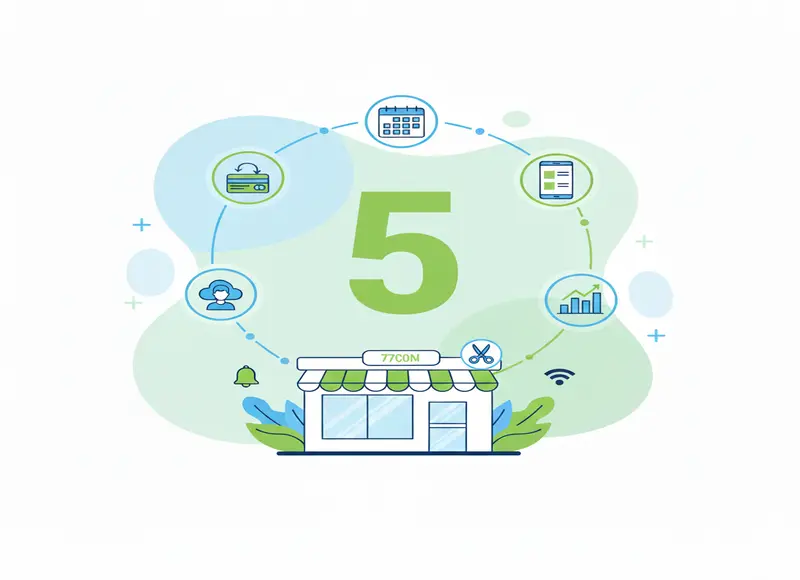Integrating Mailchimp with Magento 2- Step by Step Process
-
Last Updated:
06 Nov 2025
-
Read Time:
7 Min Read
-
Written By:
 Isha Choksi
Isha Choksi
-
1051
Table of Contents
Mailchimp is the ideal marketing tool for Magento owners. Its user-friendly functionality perfectly complements the flexibility and reliability of Magento 2.

Mailchimp is the ideal marketing tool for Magento owners. Its user-friendly functionality perfectly complements the flexibility and reliability of Magento 2.
Integrating Mailchimp with Magento 2 can be intimidating for first-timers. But when it’s configured correctly, it helps you transfer store data to your Mailchimp account, offer customers personalized product recommendations, and track vital marketing campaign metrics like engagement and ROI easily.
And here’s the good news: you don’t have to be a Magento marketing guru to do it!
Thanks to the Mailchimp Magento 2 extension, you can integrate your store and Mailchimp account without specialized skills.
In this Mailchimp-Magento integration guide, you’ll learn how to:
- Create a Mailchimp account,
- Install the official Mailchimp Magento 2 extension,
- Connect your store with your Mailchimp account,
- Create a Mailchimp store in Magento,
- Configure Mailchimp ecommerce settings in Magento.
Five simple steps to integrate your Magento 2 store and Mailchimp account
It’s worth pointing out that this guide requires some familiarity with the Magento command-line interface (CLI). So, if you aren’t comfortable using it, you can reach out to an eCommerce agency for expert assistance.
Prerequisites
Before you start, make sure you have:
- Access to your Magento Marketplace account,
- SSH access to the Magento CLI as the filesystem owner,
- Administrative access to your Magento store.
This will allow you to follow the entire tutorial without interruptions and integrate the Mailchimp extension without any downtime. Once you’ve verified everything, you can begin with the first step.
Step 1: Create a Mailchimp account

Before you integrate Magento 2 with Mailchimp, you need to sign up for a Mailchimp account.
- To create a new account, head over to Mailchimp’s website and click the “Sign Up Free” button in the top right corner.

- You’ll be redirected to the signup page to fill in account details such as your email, username, and password. Once completed, click “Sign Up” to finish.

- Next, you will see a confirmation message requesting you to verify your email.

- Head over to your email account, open the verification email from Mailchimp, and click “Activate Account.”

- After that, you’ll be redirected to a new page where you’ll have to solve a CAPTCHA to verify that you’re human.

- Once you’ve completed the CAPTCHA, you’ll be redirected to the “Account Set Up” page. Over here, you need to choose a plan for your account. We’ve selected the free plan for this guide. Choose whichever you prefer and click “Next” to proceed with the account setup.
- Complete the rest of the process by filling in basic information such as your business details. You can skip the contact upload step at this point. You’ll be able to transfer it automatically once you’ve integrated Mailchimp and Magento.

- After that, you’ll be redirected to your Mailchimp account to begin setting up your Magento store integration. You can leave this tab open. We’ll come back to it once we’re ready to set it up in Step 3.
For now, let’s move on to downloading and installing the Mailchimp Magento 2 extension on your store.
Step 2: Install the Mailchimp Magento 2 extension

Head over to the Magento Marketplace, log in to your registered account, and purchase the official Mailchimp Magento extension. This step is essential because it provides the extension developers with your contact information for licensing, support, and service.
After that, log in to your Magento server as the filesystem owner and navigate to the Magento root directory. Then, follow these steps to install the Mailchimp extension via the command line:
- Put your store in maintenance mode by entering the following command in the terminal: Update the composer.json file with the name and version of the Mailchimp extension by using the following command:
$ bin/magento maintenance:enable
- Update the composer.json file with the name and version of the Mailchimp extension by using the following command:
$ composer require mailchimp/mc-magento2
Note: This command installs the latest Mailchimp extension release compatible with Magento 2.4.x. If you’re installing Mailchimp for any other version, make sure you use a compatible release when you’re updating your store’s composer.json file.
For example, if you’re installing Mailchimp for Magento version 2.2.x, you can use the following command to update your composer.json file with a compatible version of the Mailchimp extension:
$ composer require mailchimp/mc-magento2:101.2.43
- Once the installation completes, verify the status of this Magento extension by running the following command:
$ bin/magento module:status Ebizmarts_MailChimp
- If the extension is disabled, run the following command to enable it. Alternatively, if the extension is enabled, move on to the next step.
$ bin/magento module:enable Ebizmarts_MailChimp –clear-static-content
- Register the extension, recompile the Magento project, clear cache, and disable maintenance mode, by running the following commands:
$ bin/magento setup:upgrade
$ bin/magento setup:di:compile
$ bin/magento cache:clean
$ bin/magento maintenance:disable
For more information about the above commands, you can refer to the Magento extension installation documentation.
And that’s it for this step. You’ve successfully installed the Mailchimp Magento extension.
Step 3: Connect your store with your Mailchimp account
- It’s time to connect your store with your Mailchimp account. The extension installed in the previous step helps you connect your store without needing additional integration services.
Let’s explore how to set it up for the first time.

- Log in to your Magento store admin panel and navigate to Mailchimp > Configuration.

- Expand the Mailchimp General Configuration section and set “Enabled” to “Yes.”

- Click “Get API credentials,” and in the popup window, enter your Mailchimp account credentials and click “Log in.”

- Next, you need to authorize access to allow the Mailchimp Magento 2 extension to synchronize data with your Mailchimp account. Click “Allow” to permit API access to the extension.

- Once authorized, you will see a confirmation message in the same window along with an API key. Copy and paste that key in the “API Key” section in the Magento admin panel. You can close the popup window after that. Finally, click “Save Config” to update your changes.
Step 4: Create a Mailchimp Store in Magento 2
It’s time to create a Mailchimp store to categorize your store data in your Mailchimp account. You can do this inside the Magento admin by following these steps:

- Navigate to Mailchimp > Mailchimp Stores in the admin panel.

- Click on the “Create New Mailchimp Store” on the top right corner.

- On the Mailchimp Store Information page, update your business information under the General and Address sections and click “Save” to create your new Mailchimp store.

- You can now verify the integration by logging in to your Mailchimp account, navigating to Integrations > Manage > Ecommerce > Magento, and clicking on “Manage your sites” on the new screen. Your store should appear on the Mailchimp stores page, as demonstrated in the screenshot above.
You can now move on to the final step and configure the store data synchronization between your Magento store and Mailchimp.
Step 5: Mailchimp Magento 2 configuration
In this step, we’ll show you how to configure the data you want to share with your Mailchimp account and tweak a few eCommerce-specific settings.

- Navigate to Mailchimp > Configuration from the admin panel and select the new Mailchimp store you’ve created.

- Expand the Ecommerce Configuration section, set “Enabled” to “Yes,” and configure the date after which you wish to synchronize your store data under the “First Date” tab. This setting allows you to choose the amount of data shared with your Mailchimp account.
For example, if you have a Magento store with orders dating back five years, you can choose to share all data going back to your first order, or only recent data going back one year to engage recent customers.
Optionally, you can also choose to send promo rules and codes and set prices to include or exclude tax.
- Expand the Abandoned Cart Configuration section and update “Enabled” to “Yes,” and set the date after which you wish to synchronize the abandoned cart data from your store. After that, click “Save Config” to save the updated configuration.
Congratulations! You’ve successfully configured your Mailchimp extension to share your Magento store data with your Mailchimp account.
Note: Magento requires cron to perform background tasks. Therefore, you must enable cron jobs on your store to allow Magento to synchronize data automatically in the background. If you haven’t enabled cron on your store, you can follow Adobe’s guide to configure and run Magento cron.
Level up your marketing with Mailchimp and Magento
Setting up the Mailchimp Magento 2 integration is the first step in creating a winning email marketing strategy. Once you’ve synchronized your store data with your Magento store, you can use Mailchimp’s personalized product recommendations feature to recommend products to your customers based on their past purchases.
You can even create audience segments based on buying habits to target customers who bought a particular item. You can categorize customers using metrics such as their average order value, order contents, and last purchase date.
Mailchimp helps you design elaborate automated journeys and guide customer purchase decisions. It allows you to enhance the buying experience for your customers while driving conversions and sales.
Mailchimp and Magento make a powerful combination that’s perfect for fostering customer loyalty. With Magento’s power-packed performance and Mailchimp’s reliable marketing tools, you have everything you need to boost your online sales even when you’re on a budget.
Recent Blogs
9 Operational Excellence Strategies: How Leading Enterprises Optimize Performance
-
24 Dec 2025
-
6 Min
-
101






